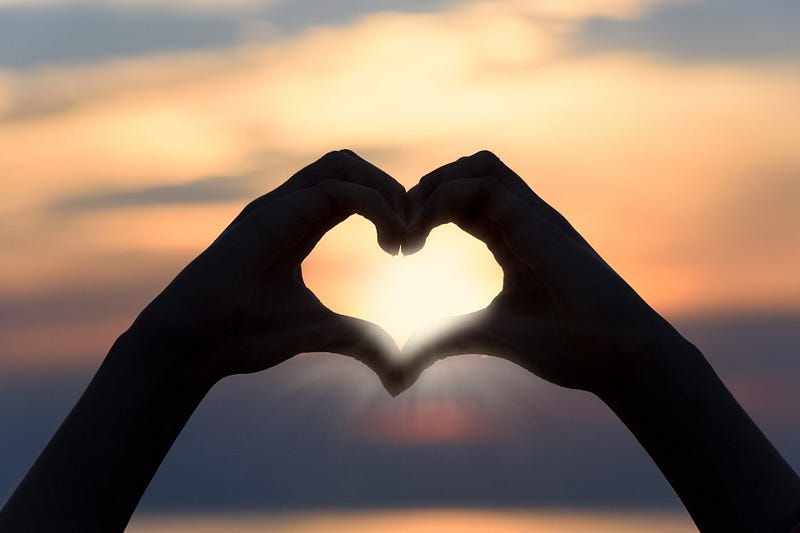Can You Feel The Love Tonight? It’s All In Your Brain
By Binh Dang, Ecology and Evolutionary Biology, 2022

Love can make you feel all warm and fuzzy inside, like you have butterflies in your stomach, or like your heart is racing a million miles an hour. You love with your heart, right? You love someone with a big heart, they can make your heart skip a beat, or they could break your heart. While the heart is associated with love, it’s the brain pulling the strings. Love is a powerful force that can change your physiology drastically, but it’s all in your head. At least, it starts there.
With thousands of love songs, romance novels, and romantic comedies, it seems like love is a complex feeling that’s an indescribable and unique experience that a person has individually. However, scientists at Rutgers University, led by Dr. Helen Fisher, have broken it down into just three categories and seven hormones.
However, scientists at Rutgers University, led by Dr. Helen Fisher, have broken it down into just three categories and seven hormones.
Lust is the first phase, and it has its roots in evolution and uses the hormones testosterone and estrogen. A desire for sexual gratification propagates the act of reproduction, which all species do. The intent is for organisms to produce offspring to continue the proliferation of parental genes and the species as a whole. When a person meets someone they are romantically interested in, their hypothalamus, which is the main hormone regulator in the brain, stimulates the production of testosterone and estrogen in the reproductive glands — the testes and ovaries. Testosterone and, to a lesser extent, estrogen increase libido in both males and females, despite the misconception that those hormones are exclusive to each sex. Some women have reported an increased sex drive while ovulating (when estrogen levels are the highest).
Attraction is the second category of love and happens in the first few weeks or months of a relationship. During this time, a person might feel lively, exuberant, and infatuated. This phase of love involves the brain’s “reward” pathway, which is dominated by the infamous dopamine — most commonly known as the “pleasure molecule.” When one does something that feels good — spending time with a romantic partner, for instance — dopamine is released by the hypothalamus. This dopamine release makes you feel rewarded and want to seek out that reward again; think, for example, about the pleasant sensation you might get when you take a bite of your favorite food or when you hear a funny joke. The phrase “love is a drug” isn’t entirely wrong either; they activate the same dopamine pathways in the brain.
The phrase ‘love is a drug’ isn’t entirely wrong either; both activate the same dopamine pathways in the brain.
Combined with another excitatory hormone, norepinephrine, your body goes through the greatest physiological changes associated with love. Norepinephrine is one of the main hormones involved in the fight or flight response, and when you are in love, it has the same effects on your body. You’re more alert, your body temperature increases, your pupils dilate, and your heart beats faster. Your digestion also slows, so you may experience gastrointestinal discomfort. In other words, that warm feeling you get when you’re in love and nervous might be heartburn.
The final molecule involved in attraction is serotonin. Attraction actually decreases levels of serotonin, which is associated with the strong infatuation present in the beginning stages of love. This is believed to be the correlation because people diagnosed with obsessive-compulsive disorder are also associated with having low levels of serotonin, hence the obsession over a romantic partner.
Attraction actually decreases levels of serotonin, which is associated with the strong infatuation present in the beginning stages of love.
The last phase of love is attachment. Unlike the other two categories, this one is also involved in other types of social relationships, not just romantic ones. The dominant hormones propagating attachment are oxytocin and vasopressin. Oxytocin is colloquially known as the “cuddle hormone” and is released by the hypothalamus during sex, childbirth, breastfeeding, and hugging. These seem like a disparate set of activities, but any event that involves bonding increases oxytocin levels. The release of vasopressin is also associated with pair bonding, though to a lesser extent than oxytocin. At this phase, the other hormones are less prevalent in the body, and oxytocin and vasopressin predominate.
This deconstructed view may seem to undermine the grand idea of love, but there are still many questions that need answering to fully understand it. There’s no denying the feel-good emotions love can cause, so we should be grateful for the influence these tiny molecules have on us. The next time you give a loved one a hug, embrace the influx of oxytocin you receive. It’s called “having chemistry” after all.
